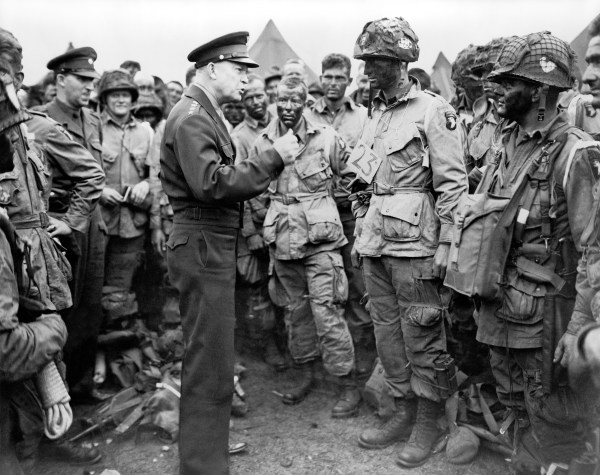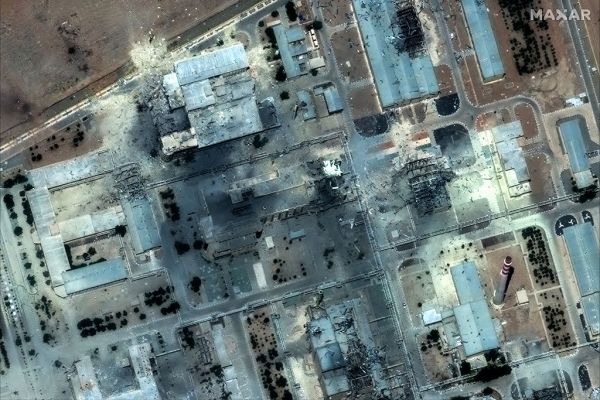As Leon Trotsky observed, you may not be interested in war, but war is interested in you. The same is true of terrorism and the Biden administration.
On Saturday, a man named Malik Faisal Akram took four hostages at a Dallas-area synagogue and engaged in a lengthy standoff with law enforcement. Agents from the FBI’s Dallas field office kept Malik Faisal Akram talking until the bureau’s hostage rescue team could arrive from Quantico and execute its main mission, saving the rabbi and his congregants. The FBI and the administration deserve credit for their handling of the threat.
But the fact that the terrorist sought to free the imprisoned, notorious al-Qaeda weapons of mass destruction operative Aafia Siddiqui points to something often forgotten: Like many revolutionary organizations, al-Qaeda began as a prison movement, and it remains intensely focused on its detainees in its propaganda, recruiting, fundraising and even operations.
Al-Qaeda was a 1980s merger (formalized in 2001) of Saudis fighting the Soviets in Afghanistan and the Egyptian Islamic Jihad. Suspected current leader Aiman al-Zawahiri served time for attempting to assassinate Hosni Mubarak.
The terror group’s 1993 World Trade Center attack was facilitated from New York’s Attica penitentiary, where El-Sayyid Nosair—imprisoned for assassinating American-born Israeli rabbi Meir Kahane in 1990—phoned in explosives-making instructions to the bombers. “Blind Sheikh” Omar Abdel Rahman, imprisoned for his role in that attack and the New York City landmarks plot, ordered the 1997 Luxor massacre from the Metropolitan Correctional Center in Manhattan and issued a purported religious justification for the September 11 attack—before the fact—from federal prison. Indeed 9/11’s so-called “muscle” hijackers were told, falsely, that they were involved in an operation to hijack planes, land them, and execute passengers in an effort to free the imprisoned blind sheikh; the four hijacker pilots, of course, knew that it was a kamikaze suicide mission. An al-Qaeda-inspired 2005 plot to attack Jewish targets in California began in Folsom State Prison.
Al-Qaeda prisoners remain dangerous while in custody. The 1998 East Africa embassy bombing defendants attempted to assault the judge, and maimed a corrections officer, while on trial in the Southern District of New York. The first American killed in Afghanistan after 9/11, CIA paramilitary case officer Mike Spann, was killed by al-Qaeda detainees at the Qala-i-Jangi prison riot. Its detainees repeatedly showed an ability to conduct prison breaks in Iraq and Afghanistan, including from U.S. military facilities One place al-Qaeda prisoners have not escaped from is the Administrative Maximum Facility or “SuperMax” in Florence, Colorado. I’ve visited the terrorists there, and it’s difficult to see how anyone could break out without the assistance of a company of infantry and combat engineers. Yet even in this facility, Sixth and Eighth Amendment rights quite properly apply. Prisoners may communicate with loved ones and each other, consult attorneys, obtain medical care, and speak with chaplains and psychologists. Despite best efforts, there is ample opportunity for them to remain in contact with former associates. And the first federal prisoners convicted of terror-related charges after 9/11, such as “American Taliban” John Walker Lindh, are now being released. Lindh still vocally supports terrorism; he and those like him will propagandize their experiences—and privately share useful details of their custody with supporters.
Two decades years after 9/11, the CIA is now out of the detention and interrogation business. U.S. military detention facilities in Afghanistan and Iraq are gone. Only 39 detainees remain in Guantanamo Bay, which the Biden administration has committed to close, as did the Obama and Bush aAdministrations. The military commissions remain dead in the water. No drone strikes against targets in Afghanistan have been reported since the U.S. departed in August. The last strike, against a suspected Islamic State target in retaliation for the Kabul airport bombing by released Bagram detainee Abdul Rahman al-Logari, went horribly awry. And the Biden administration has placed a moratorium on federal executions, although his solicitor general defended on appeal the death sentence against Boston bomber Dzhokhar Tsarnaev, and capital charges are pending against Sayfullo Saipov, an Islamic State adherent who ran down pedestrians in Manhattan.
As such, U.S. counterterrorism policy is again what it was during the Clinton Administration: essentially a federal law enforcement response, but now with capital punishment, as meted out to Oklahoma City bomber Timothy McVeigh, off the table. This isn’t necessarily a criticism: terrorism is, after all, a crime.
While I fear that over-reliance on the criminal justice system to handle international terrorism makes America a one-handed puncher, as it did in the 1990s, the intel agencies and military made their share of good-faith mistakes since 2001, too. While probable intelligence and capability gaps in Afghanistan must be serious concerns, senior policymakers also clearly want the intelligence community and the Pentagon to refocus limited resources on looming “great power competition” against Russia and especially China. Meanwhile the Justice Department put together a sterling record of terrorism prosecutions after 9/11. The FBI failed to stop some attacks in the U.S. that law enforcement might reasonably have prevented, but the bureau also thwarted several dozens of others.
Yet as al-Qaeda is still active and will remain focused on its prisoners, the U.S. government will be dealing with this vexed issue for decades. Adolf Hitler’s deputy Rudolf Hess was convicted at Nuremberg in 1947 of conspiracy to commit the crime against peace of a war of aggression, and sentenced to life behind bars. Hess remained in Berlin’s Spandau Prison until 1987, an object of fascination to neo-Nazis, his term in custody ending only with his suicide.
Aafia Siddiqui was arrested in 2008, and so the federal government will likely be dealing with the problems posed by her and other al-Qaeda detainees through the 2050s. As William Faulkner wrote, “The past is never dead. It’s not even past.”
Kevin Carroll served as an Army and CIA officer, senior counsel to the House Homeland Security Committee, and senior counselor to the Secretary of Homeland Security.






Please note that we at The Dispatch hold ourselves, our work, and our commenters to a higher standard than other places on the internet. We welcome comments that foster genuine debate or discussion—including comments critical of us or our work—but responses that include ad hominem attacks on fellow Dispatch members or are intended to stoke fear and anger may be moderated.
With your membership, you only have the ability to comment on The Morning Dispatch articles. Consider upgrading to join the conversation everywhere.